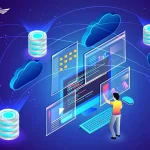Defining Novafork and Its Origins
Novafork refers to an advanced forking protocol and system architecture originally emerging from the field of distributed computing. Its roots trace back to early academic work on resilient systems capable of self-correction under high latency or failure conditions. Over time, a community of developers expanded the concept into a real distributed framework combining blockchain, mesh networks, and AI‑driven microservices. The result is a platform designed for adaptive parallel processing that remains robust across diverse environments
How Novafork Works: Design and Mechanisms
The internal architecture of Novafork brings together decentralization with intelligent resource planning and secure integrations.
2.1 Forking and Task Distribution
When a computing job enters the system—such as a climate model or AI task—Novafork splits it into independent “nova branches.” These task fragments are dispatched to specialized nodes based on capability, latency, and energy cost. Each branch executes in isolation but contributes to a unified outcome verified through a consensus layer known as Proof of Integration
2.2 Self‑Healing, Adaptive Mesh Networks
The network actively monitors node health. If a node fails or deviates, the system isolates it and reroutes tasks to healthy alternatives nearly instantaneously. This self-healing architecture ensures uninterrupted operation even under unpredictable conditions .
2.3 Security, Crypto‑resilience, and Low‑Latency Communication
Novafork builds on cryptographic layers resilient to quantum threats. Its consensus mechanisms and messaging protocols maintain low-latency synchronization—often under 30 ms globally—while preserving integrity and privacy across all distributed nodes
Key Uses and Domains of Application
Novafork’s adaptability and design make it ideal for a range of demanding scenarios, from development environments to decentralized infrastructure.
3.1 Real‑Time Scientific and Engineering Simulations
The platform supports tasks such as aerospace modeling, climate simulations, and high-stakes scientific computation by distributing workload across thousands of specialized nodes while maintaining synchronicity and resilience
3.2 Collaborative Software Development and Version Control
Developers use Novafork to create branches, propose changes, and test features without impacting the main codebase. Merge workflows, review processes, and task automation are supported by integrated analytics and collaboration interfaces
3.3 Decentralized Governance and Protocol Customization
In decentralized systems, Novafork facilitates diverse governance models—from token-based voting to reputation or admin-signer frameworks. Users can create customized protocols or registries suited to specific domains, embedding governance logic directly into each fork
Benefits and Strengths of Novafork
Novafork delivers measurable gains in performance, innovation capacity, and open collaboration.
4.1 Scalability, Efficiency, and Speed
Systems built on Novafork can process parallel workloads with substantial speed improvements—benchmarks report up to ~43% gain in efficiency and 62% reduction in latency compared to standard centralized clouds
4.2 Innovation Through Decentralized Branching
Teams and organizations can experiment freely by branching projects for research or customization. Such experimentation is safe, reversible, and encourages creative problem-solving without destabilizing core systems
4.3 Security, Flexibility, and Integration
Novafork supports modular node specialization, secure cryptographic verification, and integration with existing tools and workflows (e.g. GitHub, GitLab, Slack). This compatibility allows seamless adoption without disrupting legacy systems .
Challenges, Risks, and Community Dynamics
Despite its strengths, Novafork faces strategic and community-related challenges.
5.1 Fragmentation and Maintenance Burdens
Widespread branching creates multiple forks that can fragment attention and resources. Keeping forks updated, synchronized, and secure can place a maintenance burden on smaller teams or individual developers
5.2 Licensing and Ethical Compliance
Using Novafork often involves working with open-source projects under specific licenses. Developers must ensure ethical forking practices and compliance with licensing agreements to avoid legal conflicts .
5.3 Uptake, Community Adoption, and Ecosystem Maturity
The tool remains relatively niche and technically advanced. Its community is small, developer-focused, and culture-driven. Without large-scale adoption or marketing, growth depends on documentation, prototypes, and word-of-mouth between technical communities rather than hype cycles
In summary, Novafork represents a cutting-edge convergence of distributed computing, secure ledger protocols, and modular task orchestration. Its architecture enables decentralized innovation, real-time fault tolerance, and flexible governance—making it valuable for research, enterprise systems, collaborative development, and decentralized project governance. Yet, realizing its potential requires careful attention to governance design, scalability management, license compliance, and community engagement. Curious about real-world deployments, developer tools, or governance use cases? Let me know—I’d be happy to dive deeper!







